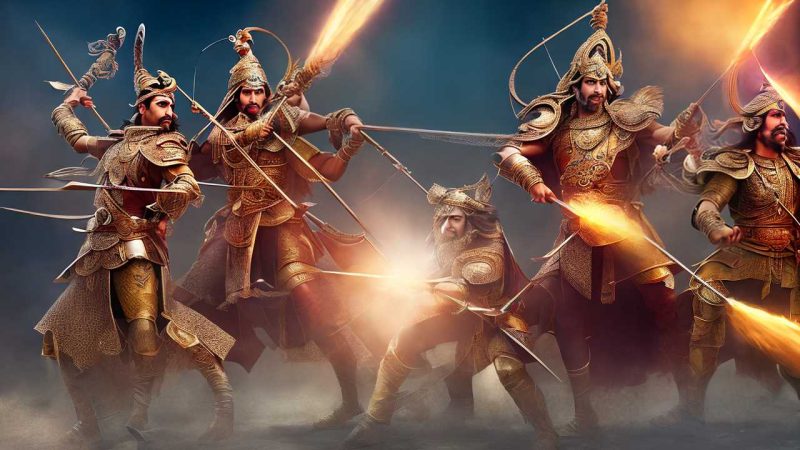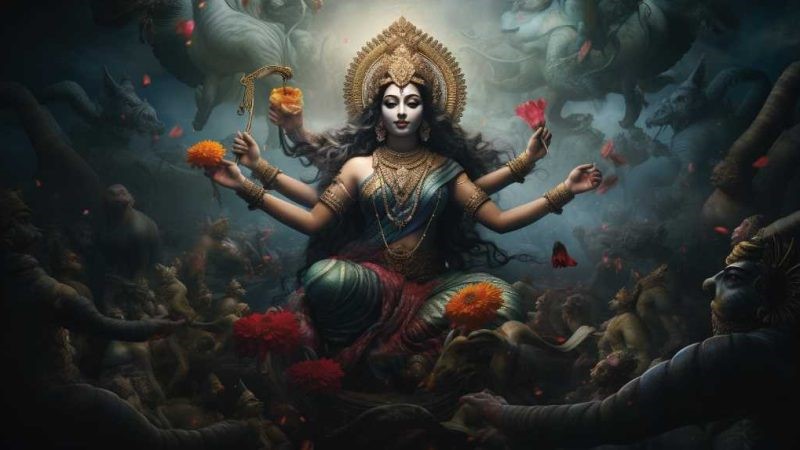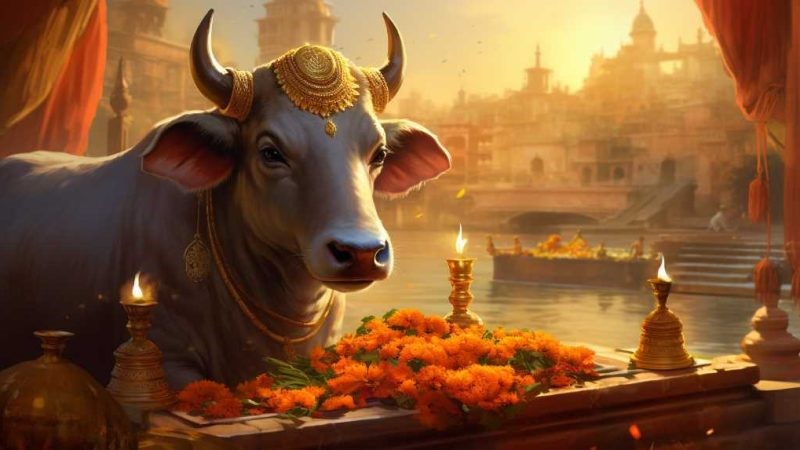The Authorship of Sacred Hindu Texts

In Hinduism, people often wonder who wrote its holy books. These texts are very important and include the Vedas, which are old religious songs, the Upanishads, which are deep philosophical writings, and the epic stories of the Mahabharata and Ramayana. Usually, people believe that gods or very wise holy men were behind these texts because they are not just regular books; they are the core ideas of Hindu beliefs and ways of life.
However, there’s more to these texts than just the belief that they come from a divine source. Scholars like to study where, when, and how these texts were made. They look at the languages used and the cultures around at the time. This helps us understand that not only are these texts about gods and beliefs, but they also reflect the people and their lives over thousands of years. This makes Hinduism one of the oldest religions still followed today.
By looking into these texts, we also see the real people who have passed down these stories and ideas over generations. They are not just myths or religious teachings; they are a record of human history and spirituality.
Origins of Vedic Literature
The Vedic literature is a collection of ancient texts that are very important to Hindu religion and philosophy. These texts came from India and were written from around 1500 to 500 before the common era. People call these texts the Vedas and there are four main types: the Rigveda, Yajurveda, Samaveda, and Atharvaveda. Each Veda has four parts.
The Samhitas are like a collection of chants and songs. The Brahmanas explain the rituals and ceremonies. The Aranyakas are guides on rituals and symbolic sacrifices. Lastly, the Upanishads focus on the deeper spiritual meanings of these rituals.
We don’t know exactly who wrote the Vedas. The stories say that ancient poets, known as rishis, created them after they received the hymns from a divine source. This process is called ‘śruti,’ which means ‘what is heard’ in Sanskrit.
Understanding the Vedas helps us see how ancient people in India thought about the world and their place in it. They are not just old texts but a link to the past that helps many find meaning and direction in life today. This makes the Vedas more than just historical documents; they are a living part of spiritual practice for many.
The Vedas: Divine or Human?
There’s a lot of discussion about who really wrote the Vedas. Some people who follow Hindu teachings think that gods gave the Vedas to wise men long ago. They say these texts have always existed and didn’t come from just one person.
But, researchers who study history and language look at the Vedas differently. They see these writings as something that people from ancient India created and passed down by word of mouth. They dig into how the language in the Vedas has changed over time and consider the different ways people lived back then. This helps them understand how these old writings might have come together, mixing creative storytelling with religious beliefs.
To make things clearer, here’s what you need to know: The Vedas are important because they are some of the oldest religious texts and they tell us about early Indian culture. When we talk about them, it’s good to remember that they didn’t just appear out of nowhere. Instead, they grew and changed as people told and retold them. This process is a bit like how a story changes as it’s passed around today.
Epic Narratives: Vyasa and Valmiki
Beyond the ancient Vedas, there are great stories linked to people like Vyasa and Valmiki. These stories are still very important in Hindu culture. Vyasa is known for writing the Mahabharata. This big story is about a family fighting for control of a kingdom and also includes the Bhagavad Gita, which is a key text for Hindu beliefs. Valmiki is said to have written the Ramayana. This book tells the story of Rama, who is believed to be a form of the god Vishnu. Some researchers aren’t sure if Vyasa and Valmiki were real people, but their stories are important. They show what people back then thought about right and wrong and how they saw the world spiritually.
Here’s why this is a big deal: these stories aren’t just old tales. They teach us about life lessons and values that many people still care about today. For example, the Bhagavad Gita from the Mahabharata has advice about duty and being a good person. It’s like a guidebook from the past that still helps people make decisions now. And the Ramayana, with Rama’s adventures, teaches about courage, loyalty, and love. These stories are like a window into how people in ancient India saw life and what mattered to them.
Philosophical Texts and Their Sages
In Hindu writings, there are important books called the Upanishads. These books are part of the Vedas, which are ancient religious texts, and they are very important for understanding Hindu beliefs about the world and who we are as people.
One of the famous teachers from these texts is Yajnavalkya. He is known for his work in the Brihadaranyaka Upanishad, where he talks about the soul and how it’s connected to a greater power. Other teachers like Uddalaka Aruni, Shvetaketu, and Sanatkumara also shared their wisdom in these writings. They used clear arguments to explain difficult ideas about life and the universe, and they encouraged people to think and talk about these ideas instead of just accepting them. This way of thinking and discussing is a big part of Hindu philosophy.
For example, in the Chandogya Upanishad, there’s a story where Uddalaka Aruni teaches his son Shvetaketu about the oneness of life by using a simple example of salt in water: once it’s dissolved, you can’t see it, but it’s there in every drop. This helps us understand how everything is connected, even if we can’t see it.
When we read these texts, it’s not just about the words on the page. It’s about the deeper meaning and how it helps us see the world and ourselves. That’s why these texts and teachers are still talked about today. They teach us to look beyond the surface and to think deeply about the big questions of life.
Unraveling the Upanishadic Mysteries
Studying the Upanishads helps us understand deep spiritual ideas and wisdom that have helped people search for truth for many years. These old writings are part of the Vedas and discuss what reality and the self are. They are not always easy to understand and encourage deep thinking. The Upanishads were not written by just one person; instead, they come from many wise men and women. Their teachings are hidden within stories and symbols, so it takes careful study to learn from them about Brahman (the ultimate truth) and Atman (the inner self).
The Upanishads’ importance lies in their role as a source of spiritual guidance. For centuries, they have been crucial in shaping philosophical thought in India. By examining these texts, we can gain insights into how ancient cultures viewed the world and our place in it. For example, the Chandogya Upanishad’s story of Svetaketu and the famous teaching ‘Tat Tvam Asi’ (That Thou Art) illustrates the unity of the individual soul and the universal spirit.
Exploring these texts, readers will find a rich collection of conversations and insights from various historical figures. This collective wisdom has stood the test of time, offering lessons on how to understand the deeper aspects of our existence. The teachings found in the Upanishads encourage a journey inward, prompting self-reflection to understand the connection between the self and the wider universe.
Conclusion
The sacred texts of Hinduism have a fascinating background. People say that gods are the source of the Vedas, which are very important religious writings. On the other hand, big stories and thoughtful texts are often connected to known figures like Vyasa and Valmiki. These were wise people from the past.
The Upanishads are another set of texts that are filled with deep thoughts. They show how people have always tried to understand life’s big questions through both feeling deeply connected to something greater and thinking hard about it. This shows how Hinduism values both the heart and the mind in learning about the universe and what’s beyond.
In short, figuring out who wrote these texts is not simple because it involves both beliefs about gods and the work of real people from history. It’s important to know this because it helps us understand the value and respect these texts have within the Hindu tradition. Plus, knowing about these texts can also give us insight into how people search for meaning in life.
When we talk about these texts, it’s like we’re uncovering a rich blend of stories and ideas that have shaped the way many people see the world. Whether it’s the Vedas, the epic tales, or the Upanishads, each text offers a unique window into the spiritual journey of Hinduism.






